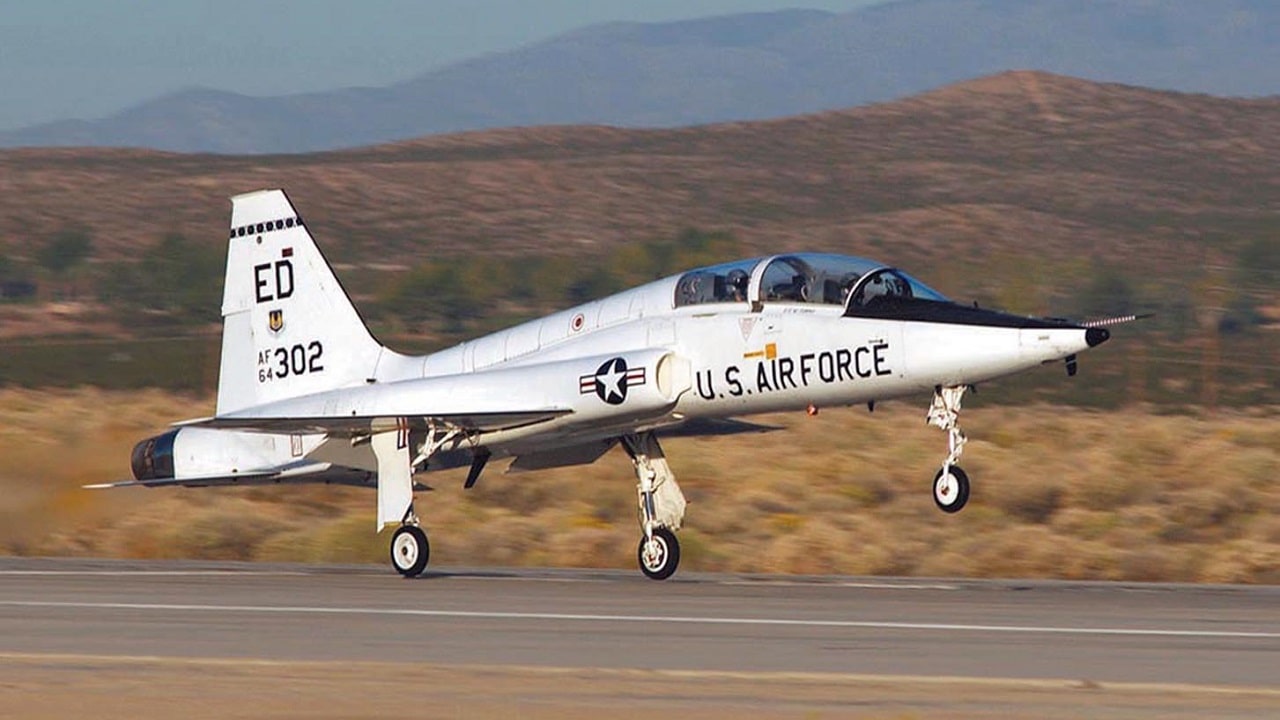T-38, A Real Training Legend: Pilots of Air Force B-52 and B-1 bombers, SR-71, U-2 spy plane, and tanker aircraft have all been trained and prepared for operations over many decades in the T-38 Talon, a twin-engine, high-altitude supersonic jet trainer.
The T-38: Explained
The Northrop T-38 Talon entered operational service as far back as 1961 and was still training pilots 60 years later in 2022. Air Force Global Strike Command still uses the T-38 to train U-2 and B-2 pilots.
The aircraft has in recent years also been flown by Taiwan, Germany, South Korea, and Turkey as a method of preparing pilots on emerging sets of electronics, air maneuvers, weapons, and sensors. A special AT-38B was designated as a weapon variant to train pilots on advanced gun sights, gun pods, rockets, and bombs, according to the U.S. Air Force’s 2018 Almanac.
The most significant element of the T-38 is quite simply its continued life. After more than 60-years of training pilots, the U.S. Air Force is modifying the aircraft to fly to 2029. Although the Air Force awarded Boeing a contract to replace the T-38 in 2018 with the T-X, the plan is for the service to keep flying the T-38 through the decade until sufficient numbers of the new aircraft arrive.
Some of the many enhancements being pursued include structural replacements, propulsion enhancements, and avionics upgrades, the 2018 text states.
Interestingly, previous variants of the T-38 have been converted into the T-38C variant with a heads-up display, GPS technology, inertial navigation and traffic collision avoidance, the Almanac states.
Computing Upgrades Change Tactics
These electronics, guidance, computing, and networking upgrades have likely proven extremely critical in recent years, given the pace of technological change.
Advanced automation and AI-enabled computing has, for instance, massively changed or reduced the often-referred-to “cognitive burden” placed on pilots.
Instead of needing to gather information from a number of disparate sources of incoming sensor data and analyze each piece in relation to one another by extracting and integrating the most relevant information, computers can now do much of this analysis autonomously.
This frees up a pilot to expend energy upon more pressing, mission-related tasks and be less encumbered by time-consuming procedural tasks.
These kinds of modernization efforts seem essential when it comes to enabling pilots to adjust tactics and concepts of operation as new technology is integrated.
Advanced gunsights, improved precision-guided weapons, longer-range high fidelity sensor systems and targeting applications introduce new tactics and combat maneuver formations for pilots seeking to keep current with emerging threats.
An ability to process, organize, analyze, and transmit information much faster due to advanced computing means pilots will need to learn to quickly absorb integrated information as opposed to assessing information pools separately. Provided pilots adapt well, this is the kind of thing that can measurably improve lethality, surveillance and multi-node networking skills.
Kris Osborn is the Military Affairs Editor of 19FortyFive and President of Warrior Maven – Center for Military Modernization. Osborn previously served at the Pentagon as a Highly Qualified Expert with the Office of the Assistant Secretary of the Army—Acquisition, Logistics & Technology. Osborn has also worked as an anchor and on-air military specialist at national TV networks. He has appeared as a guest military expert on Fox News, MSNBC, The Military Channel, and The History Channel. He also has a Masters Degree in Comparative Literature from Columbia University.

